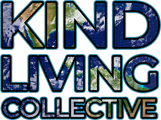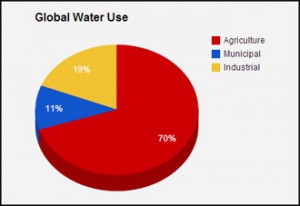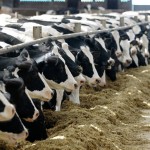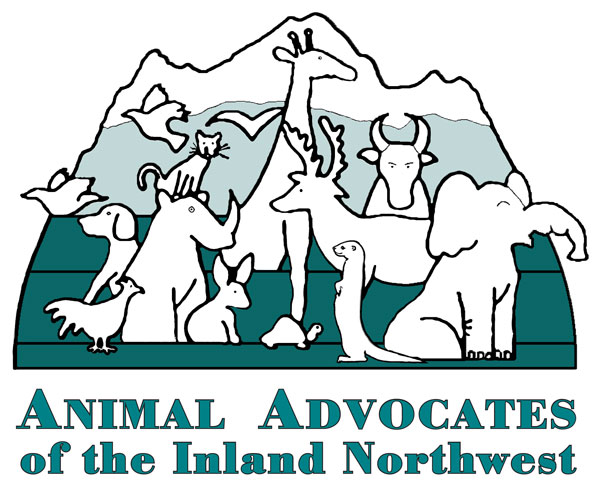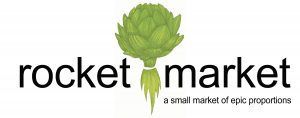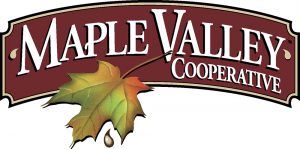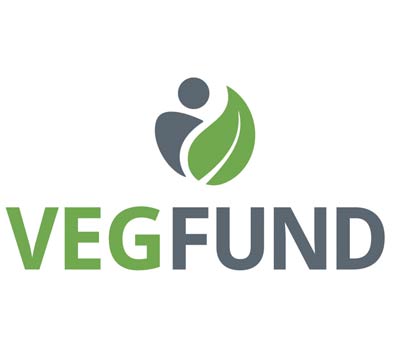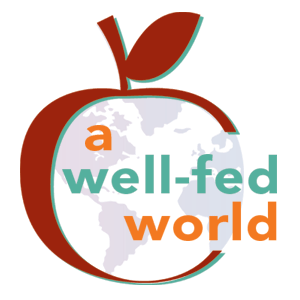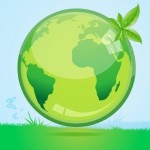 Every action has a cost and this is especially true regarding our food choices. Visible costs of food production include paying money for food as well as the fuel needed to get groceries to the store or restaurant. What most people don’t readily recognize are the hidden costs of food production. Animal agriculture, that is – breeding, raising, killing, and transporting the flesh and secretions of non-human animals – is the leading cause of species extinction, ocean dead zones, water pollution, and habitat destruction.
Every action has a cost and this is especially true regarding our food choices. Visible costs of food production include paying money for food as well as the fuel needed to get groceries to the store or restaurant. What most people don’t readily recognize are the hidden costs of food production. Animal agriculture, that is – breeding, raising, killing, and transporting the flesh and secretions of non-human animals – is the leading cause of species extinction, ocean dead zones, water pollution, and habitat destruction.
Water
Just one hamburger requires 660 gallons of water to produce. That is equivalent to 2 months’ worth of showers. 1,000 gallons of water are required to produce just 1 gallon of dairy milk. On average, according to the National Geographic, a vegan, a person who doesn’t eat meat or dairy, indirectly consumes nearly 600 gallons of water per day less than a person who eats the standard American diet. That’s a savings of 219,000 gallons a year per person. Why does this matter? Currently, one-third of the world’s population are living in countries which are experiencing water shortages. As we waste water on animal agriculture, we are also creating deserts, poisoning millions of hectares of land with salt, killing entire lakes such as the Aral Sea, and wiping out entire species.
Additionally, animal waste is responsible for most water pollution. A farm with 2,500 dairy cows produces the same amount of waste as a city of 411,000 people. Overall, 130 times more animal waste than human waste is produced in the US – 1.4 billion tons from the meat industry a year. 5 tons of animal waste is produced for every person. Where does the waste go? It is drained into entire lakes which then contaminate surrounding land. One factory farm will produce on average a waste lake the size of 4 football fields. How many factory farms can there be? In North Carolina alone there are over 2,000 of these farms – each one producing enormous waste lakes or cesspools. When the lake is full it has to be emptied and they do this by spraying the liquid waste through a sprinkler system not unlike the ones that we use in our gardens. You can view one of these waste lakes here: https://www.youtube.com/watch?v=ayGJ1YSfDXs.
Pollution
Animal agriculture is responsible for more greenhouse gas emissions than all transportation combined. What does this look like? Livestock and their byproducts account for at least 32,000 million tons of carbon dioxide per year, or, 51% of all worldwide greenhouse gas emissions. Chickens, turkeys, pigs, and cows are collectively the largest producer of methane in the U.S. and methane is 20x more powerful at trapping heat in the earth’s atmosphere than carbon dioxide. Livestock is responsible for 65% of all emission of nitrous oxide – a greenhouse gas 300x more powerful at trapping heat in the earth’s atmosphere than carbon dioxide. Everyone knows that greenhouse gases are a great problem of our time but most people don’t know how to help. Cars are not the problem. The energy industry is not the problem. Raising animals for human consumption, and the deforestation that happens as a result, is single-handedly the most destructive thing we are doing to our earth.
Deforestation
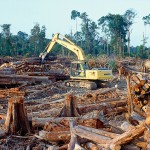 One of the more visible consequences that animal agriculture has on our environment, is the amount of land used for raising animals. Animal agriculture is responsible for 91% of Amazon destruction. 30% of the earth’s land mass or 17 million square miles are used to raise animals for food. The moon has less area than that, at 14.6 million square miles. More than 260 million acres of U.S. forest have been cleared to create cropland to grow grain to feed farmed animals. This minute – every minute – the equivalent of 7 football fields of land are bulldozed to create more room for farmed animals.
One of the more visible consequences that animal agriculture has on our environment, is the amount of land used for raising animals. Animal agriculture is responsible for 91% of Amazon destruction. 30% of the earth’s land mass or 17 million square miles are used to raise animals for food. The moon has less area than that, at 14.6 million square miles. More than 260 million acres of U.S. forest have been cleared to create cropland to grow grain to feed farmed animals. This minute – every minute – the equivalent of 7 football fields of land are bulldozed to create more room for farmed animals.
Starvation
It takes 16 pounds of grain to produce just 1 pound of edible animal flesh. With 805 million people continuing to struggle with hunger every day and each year 2.6 million children dying as a result of hunger-related causes, choosing plants over animals can save human lives as well as animal lives. 20% of the world’s population, or 1.4 billion people, could be fed with the grain and soybeans fed to U.S. cattle alone. Even farmed fish must be fed 5 pounds of wild-caught fish to produce just 1 pound of edible farmed fish flesh. Meanwhile, we can grow enough grains, beans, mushrooms, fruits, and vegetables to feed everyone on this earth. With the world’s human population continually growing, it is simply not sustainable to raise animals for food.
Making the Connection
The big problem here, is that we are going through the animals to get the nutrients that the animals get because the animals eat plants. Cow’s milk, for example, has calcium in it because the cows eat plants that have calcium. Why not eat the plants directly instead of feeding them to the animals and eating them? By eating the plants directly instead of going through the animal first, we save millions and millions of acres of land, cut greenhouse gas emissions in half, have clean water for everyone, end species extinction which is detrimental to our fragile ecosystem, live longer healthier lives, and end the suffering of billions of animals a year.
So what can we do? We can start by making simple choices today. When we go to the grocery store, we are voting with our dollar. We are voting for more and cleaner water, for the protection of animals from extinction, for cleaner air, for reducing the effects of global warming. We are voting to feed those who suffer from hunger, voting for our health, voting to keep a planet for future generations to live on. And it doesn’t have to be hard. Eating plant-based is not about making sacrifices. Vegans enjoy all of the same foods – pizza, lasagna, meatloaf, nachos, breakfast burritos, and so much more – by making simple switches in what we buy. Meat, for example, is about smoke, salt, and fat. Try making tempeh bacon by sautéing tempeh strips on the stove with some liquid smoke, olive oil, soy sauce, and salt. Buy almond, hemp, cashew, hazelnut, soy, or coconut milk instead of cow’s milk. Buy Earth Balance butter instead of dairy butter, Just Mayo instead of mayonnaise with egg in it, Ener-G Egg Replacer for use instead of eggs in all types of baking. These are small choices with a huge impact on our environment.
Want to learn more? Here are a list of resources to learn more about how animal agriculture is effecting our planet and how you can help:
Websites and PDFs
Vegansim and the Environment: By the Numbers (Infographic)
Veganism is Environmentalism (Facts and Figures)
Movies
Cowspiracy
Books
Eating Earth: Environmental Ethics and Dietary Choice by Lisa Kemmerer
